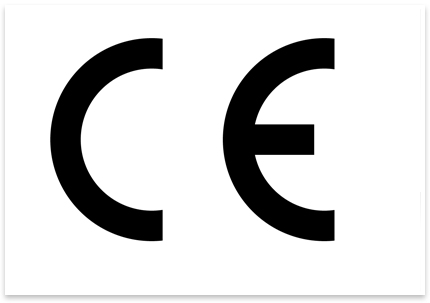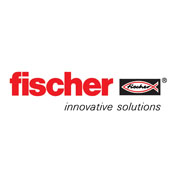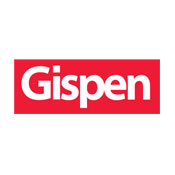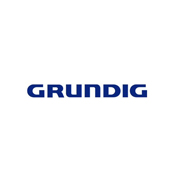Requirements instructions Machinery Directive

Which requirements are there in the Machinery Directive for writing instructions?
Every machine that is marketed or used within the European Union must comply with the health and safety requirements from the Machinery Directive. Only if your machine meets these requirements, the machine may be traded within the entire EU. By affixing the CE mark, you declare that your machine complies with the Machinery Directive and possibly other CE guidelines. Apart from requirements regarding the design, the Machinery Directive also states demands regarding the documentation. This article lists the requirements from the Machinery Directive on any manual published in the EU.
Contents
- General instructions when drafting instructions
- Requirements what should be in the instruction manual
- Sales literature should mirror the requirements for the instructions
- Special categories of machinery: special requirements for instructions
- Special hazards due to the use of machinery: special requirements for instructions
General requirements when drafting instructions
All machinery must be accompanied by instructions in the official community language or languages of the member state in which it is placed on the market and/or put into service.
The instructions accompanying the machinery must be either ‘Original instructions’ or a ‘Translation of the original instructions’, in which case the translation must be accompanied by the original instructions.
By way of exception, the maintenance instructions intended for use by specialized personnel mandated by the manufacturer or his authorized representative may be supplied in only one community language which the specialized personnel understand.
The instructions must be drafted in one or more official community languages. The words ‘Original instructions’ must appear on the language version(s) verified by the manufacturer or his authorized representative.
Where no ‘Original instructions’ exist in the official language(s) of the country where the machinery is to be used, a translation into that/those language(s) must be provided by the manufacturer or his authorized representative or by the person bringing the machinery into the language area in question. The translations must bear the words ‘Translation of the original instructions’.
The contents of the instructions must cover not only the intended use of the machinery but also take into account any reasonably foreseeable misuse thereof.
In the case of machinery intended for use by non-professional operators, the wording and layout of the instructions for use must take into account the level of general education and acumen that can reasonably be expected from such operators.
Requirements what should be in the instruction manual
Each instruction manual must contain, where applicable, at least the following information:
- the business name and full address of the manufacturer and of his authorized representative;
- the designation of the machinery as marked on the machinery itself, except for the serial number;
- the EC declaration of conformity, or a document setting out the contents of the EC declaration of conformity, showing the particulars of the machinery, not necessarily including the serial number and the signature;
- a general description of the machinery;
- the drawings, diagrams, descriptions and explanations necessary for the use, maintenance and repair of the machinery and for checking its correct functioning;
- a description of the workstation(s) likely to be occupied by operators;
- a description of the intended use of the machinery;
- warnings concerning ways in which the machinery must not be used that experience has shown might occur;
- assembly, installation and connection instructions, including drawings, diagrams and the means of attachment and the designation of the chassis or installation on which the machinery is to be mounted;
- instructions relating to installation and assembly for reducing noise or vibration;
- instructions for the putting into service and use of the machinery and, if necessary, instructions for the training of operators;
- information about the residual risks that remain despite the inherent safe design measures, safeguarding and complementary protective measures adopted;
- instructions on the protective measures to be taken by the user, including, where appropriate, the personal protective equipment to be provided;
- the essential characteristics of tools which may be fitted to the machinery;
- the conditions in which the machinery meets the requirement of stability during use, transportation, assembly, dismantling when out of service, testing or foreseeable breakdowns;
- instructions with a view to ensuring that transport, handling and storage operations can be made safely, giving the mass of the machinery and of its various parts where these are regularly to be transported separately;
- the operating method to be followed in the event of accident or breakdown; if a blockage is likely to occur, the operating method to be followed so as to enable the equipment to be safely unblocked;
- the description of the adjustment and maintenance operations that should be carried out by the user and the preventive maintenance measures that should be observed;
- instructions designed to enable adjustment and maintenance to be carried out safely, including the protective measures that should be taken during these operations;
- the specifications of the spare parts to be used, when these affect the health and safety of operators;
- the following information on airborne noise emissions:
- the A-weighted emission sound pressure level at workstations, where this exceeds 70 dB(A); where this level does not exceed 70 dB(A), this fact must be indicated,
- the peak C-weighted instantaneous sound pressure value at workstations, where this exceeds 63 Pa (130 dB in relation to 20 µPa),
- the A-weighted sound power level emitted by the machinery, where the A-weighted emission sound pressure level at workstations exceeds 80 dB(A).
- where machinery is likely to emit non-ionising radiation which may cause harm to persons, in particular persons with active or non-active implantable medical devices, information concerning the radiation emitted for the operator and exposed persons.
Sales literature should mirror the requirements for the instructions
Sales literature describing the machinery must not contradict the instructions as regards health and safety aspects. Sales literature describing the performance characteristics of machinery must contain the same information on emissions as is contained in the instructions.
Special categories of machinery: special requirements for its instructions
Foodstuffs machinery and machinery of cosmetics or pharmaceutical products
The instructions for foodstuffs machinery and machinery for use with cosmetics or pharmaceutical products must indicate recommended products and methods for cleaning, disinfecting and rinsing, not only for easily accessible areas but also for areas to which access is impossible or inadvisable.
Portable hand-held and/or hand-guided machinery
The instructions must give the following information concerning vibrations transmitted by portable handheld and hand-guided machinery:
- the vibration total value to which the hand-arm system is subjected, if it exceeds 2,5 m/s2. Where this value does not exceed 2,5 m/s2, this must be mentioned,
- the uncertainty of measurement.
These values must be either those actually measured for the machinery in question or those established on the basis of measurements taken for technically comparable machinery which is representative of the machinery to be produced.
If harmonized standards are not applied, the vibration data must be measured using the most appropriate measurement code for the machinery. The operating conditions during measurement and the methods used for measurement, or the reference of the harmonised standard applied, must be specified.
Portable fixing and other impact machinery
The instructions must give the following information concerning vibrations transmitted by portable handheld and hand-guided machinery:
- the accessories and interchangeable equipment that can be used with the machinery,
- the suitable fixing or other impacted elements to be used with the machinery,
- where appropriate, the suitable cartridges to be used.
Special hazards due to the use of machinery: special requirements for its instructions
Mobility of machinery (vibrations)
The instructions must give the following information concerning vibrations transmitted by the machinery to the hand-arm system or to the whole body:
- the vibration total value to which the hand-arm system is subjected, if it exceeds 2,5 m/s2. Where this value does not exceed 2,5 m/s2, this must be mentioned,
- the highest root mean square value of weighted acceleration to which the whole body is subjected, if it exceeds 0,5 m/s2. Where this value does not exceed 0,5 m/s2, this must be mentioned,
- the uncertainty of measurement.
These values must be either those actually measured for the machinery in question or those established on the basis of measurements taken for technically comparable machinery which is representative of the machinery to be produced.
Where harmonised standards are not applied, the vibration must be measured using the most appropriate measurement code for the machinery concerned.
The operating conditions during measurement and the measurement codes used must be described.
Lifting operations
Each lifting accessory or each commercially indivisible batch of lifting accessories must be accompanied by instructions setting out at least the following particulars:
- the intended use;
- the limits of use (particularly for lifting accessories such as magnetic or vacuum pads);
- instructions for assembly, use and maintenance;
- the static test coefficient used.
Lifting machinery must be accompanied by instructions containing information on:
- the technical characteristics of the machinery, and in particular:
- the maximum working load and, where appropriate, a copy of the load plate or load table.
- the reactions at the supports or anchors and, where appropriate, characteristics of the tracks,
- where appropriate, the definition and the means of installation of the ballast;
- the contents of the logbook, if the latter is not supplied with the machinery;
- advice for use, particularly to offset the lack of direct vision of the load by the operator;
- where appropriate, a test report detailing the static and dynamic tests carried out by or for the manufacturer or his authorized representative;
- for machinery which is not assembled on the premises of the manufacturer in the form in which it is to be used, the necessary instructions for performing the measures before it is first put into service.





